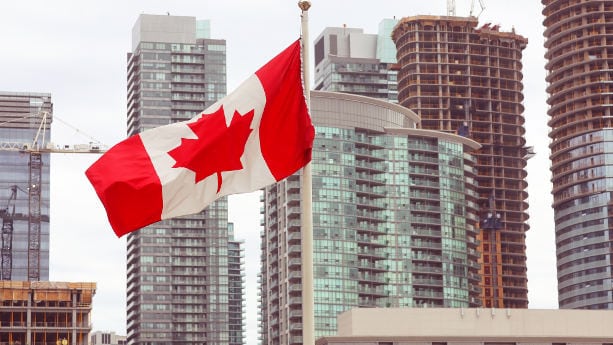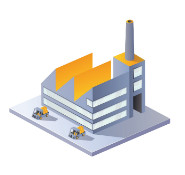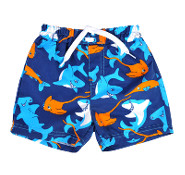
Consumer product safety standards and labeling laws and regulations are designed to ensure the safety of consumers in Canada. They provide a detailed guideline and safety requirements (and more) to sellers, manufacturers, and dealers who want to import goods to Canada.
To import, manufacture, advertise or sell a product in Canada, you must possess certifications, lab tests, compliance with the Canada Consumer Product Safety Act, Consumer Packaging, and Labeling Act, and other regulations based on the type of product you want to import or manufacture.
In this article, I have provided detailed information about the Canada Consumer Product Safety Act, also known as CCPSA, what it means for importers, and what is required if you want to import products to Canada.
What is Canada Consumer Product Safety Act?
Canada Consumer Product Safety Act was passed as a law by the government in 2010 and went into effect in 2011 to ensure the safety of Canadian consumers. With proposed changes to the Hazardous Products Act (HPA), it replaced the 40 years old HPA with new regulations and amendments.
According to the act, all consumer products in Canada must be regulated under the Canada Consumer Product Safety Act (CCPSA). The law was proposed after the growing consumer complaints about the safety of consumer products in the country.
As the HPA was not amended for the last 40 years, it failed to provide safety and protection against many modern products and gadgets, especially toys. There was a need for a new act with a set of modern regulations and laws to ensure public safety.
Under the new act, manufacturers and importers are now required to obtain safety information in the form of mandatory checks, tests, and certifications (if required by the inspectors from Health Canada), to meet the requirements of Canada Consumer Product Safety Act (CCPSA).
The CCPSA is designed to prohibit the importers and manufacturers from importing, manufacturing, selling, and even advertising consumer products that are in any way poses danger to safety and health of humans.
The new act along with also Consumer Packaging and Labeling Act prohibits importers and manufacturers to misrepresent a product, misguide or mislead consumers.
Health Canada is responsible to enforce the CCPSA regulations and amendments within the borders of Canada. The inspectors from Health Canada have an authority to inspect any product and ask seller, importer, or manufacturer to provide certificates or test results to ensure compliance with CCPSA.

FREE CONSULTATION SESSION
- 1. How to create product designs & specifications
- 2. Finding suppliers in China, Vietnam & India
- 3. Shipping & import taxes (US, EU, UK & Australia)
- All attendees can ask questions!
- Best Regards, Ivan Malloci
As an Importer, am I responsible for ensuring that my products are compliant?
When importing from Asia, or any other part of the world, you’re responsible to ensure if your products are in compliance with CCPSA.
Here are few tips for importers to make sure their products satisfy the conditions and regulations under CCPSA.
a. Keep detailed records
Under the Canada Consumer Product Safety Act, the law required importers and manufacturers to maintain at least six years of company record. The documents include information related to the supplier from whom you obtained the products, like name and address.
These documents must be available at the place of importer’s or manufacturer’s business situated within Canada.
b. Be ready to provide test reports and other compliance documents
Health Canada can ask importers to provide safety information in compliance with CCPSA regulations. For this, you’ve to provide test results and have resources to do checks when required by the authorities.
In most case, you’ve to get your products tested from the lab that is accredited by Standard Council of Canada. For some products, like electronic products, it is mandatory to have a certification mark that shows compliance with all the regulations under Canadian Electrical Code.
c. Make sure labeling is in compliance of the Consumer Packaging and Labeling Act
Make sure the labeling has all the mandatory information, which is the name of the prepackaged product, name, and origin of seller or manufacturer and net quantity. You must ensure that the labeling does not contain any misinformation that can misguide consumers.
Similarly, the design and shape of the package must also not misleading for the consumers. Health Canada under the CCPSA has an authority to recall products if they feel the design and package copy is misleading for consumers in any way.
Toy and Children’s Product Safety Standards
Children toys and other related products that are imported, sold, and advertised in Canada must be in compliance with the regulations under CCPSA Toys Regulations.
The Toy Regulations are specifically designed for children toy’s and addresses the associated hazards like mechanical properties (i.e., seams and parts), flammability and substances (i.e., lead and other heavy metals).
It’s similar to CPSIA in the United States, and EN 71 in the European Union.
Under CCPSA, following products are prohibited to import and manufacture in Canada.
- Jequirity beans
- Certain lawn darts
- Certain kites and kite strings
- Certain teethers for babies.
In order to make sure the toy does not cause any mechanical hazards, there are two standard tests under Toy Regulation for importers:
a. Drop Test
b. Push/Pull test.
For toys that are designed for children under 3 years of age, the regulations require that it must not have a small digestible separable component to protect young children from ingesting small component.
Similarly, it must not use plant seeds as pellets to make noise, commonly used in rattles.
For textile materials used in toys like dolls, soft toys, children’s play tents, and plush toys, strict flammability requirements are in place.
To assess the compliance with the requirements under Toy Regulations, Test Method for the Flammability of Toys is conducted by The Health Canada Product Safety Laboratory.
Toxic Substances
Under the Toy Regulations, toys are prohibited from containing toxic substances in the manufacturing of toys (at least above certain thresholds). If you’re an importer of toys in Canada, make sure the toy does not contain following:
a. Toys with surface coating material as lead which is present in excess of 90 mg/kg.
b. A compound of mercury.
c. A compound of arsenic, barium, cadmium, and antimony. (The toy is not allowed if more than 0.1% of the mentioned compounds dissolved in 5% hydrochloric acid after being stirred at 20 C for 10 minutes).
d. Any toy that contains asbestos that is separable from the toy under Asbestos Products Regulations.
e. Children jewelry items that contain cadmium.
All the tests recommended by Toys Regulations are not necessarily mandatory for the toy importer.
Canada Consumer Product Safety Act recommends industry members and sellers to perform these tests to ensure the safety of the toys but it is not mandatory for importers.
That said, imported products may still be subject to a forced recall, even though testing may not be mandatory.
As such, you are strongly advised to submit your products for compliance testing, when importing from China (or elsewhere in Asia), to Canada.
On the other hand, importers of electrical toys must provide a compliance certification mark from a certification body that is accredited by the Standard Council of Canada.
The certification mark must indicate that the toy has been tested and meets all regulations under the Canadian Electrical Code.
Electronic Product Regulations
For importing electrical products to Canada, the products must be in compliance with the Canadian Electrical Code C22.1-02.
According to the code, all electronic products that are sold in Canada and connected to a source of power must be approved by a recognized certification agency in Canada.
Just like the electrical toys, all electronic products must have a certification mark that indicates that the product has been tested and meets all regulations under the Canadian Electrical Code.
It is the responsibility of importer or manufacturer to get the compliance certification mark from the certification body accredited by the Standard Council of Canada (SCC).
Don’t expect to find manufacturers with ‘ready made’ product certificates for Canada. Instead, you should do a background check to verify that the supplier can comply with EU or US safety standards.
Once you have selected a product, you can submit a sample for compliance testing with an accredited certification body.
As said, not any lab test company will do. Only one that’s accredited by the Standard Council of Canada.
Furniture and Fire Safety
Furniture and other textile products that are manufactured, imported and sold in Canada must meet the flammability requirements under the guidelines laid by Textile Flammability Regulations in Canada.
If you’re an importer of bedding items like sheets, pillows, comforters, blankets, mattress pads and similar bedding items, you must get your products tested in accordance with Canadian General Standards Board Standard under the Textile Flammability Regulations.
General Product Labeling Requirements
To make sure that prepackaged consumer products contain meaningful and accurate labeling information, the Canadian government has approved Consumer Packaging and Labeling Act along with Textile Labeling Act.
It requires manufacturers, importers, and sellers to provide accurate information as labels on their prepackaged consumer products that can help them take an informed decision.
The act prohibits importers and manufacturers to label any misleading information that can result in negative effects on human health and body.
The Textile Labeling Act has the same conditions applied to textile articles imported, manufactured and sold in Canada.
Before moving forward, I want to define “prepackaged product” to bring more clarity to readers.
It is a product that is packaged in a container (wrapper, package, receptacle, or confining band) and sold to the consumer as it is without being repackaged.
Here are few labeling conditions for prepackaged products imported to and manufactured in Canada.
a. The label must contain the identity of the prepackaged product in terms of its function or generic name.
b. The label must contain the principal place of business and identity of the manufacturer or dealer.
c. The label must contain the information about the quality, age, size, quantity, nature, material content, geographic origin, performance, composition, where applicable.
d. The label must provide accurate information about the quantity of the product packaged in the container.
What Labels Prepackaged Products Must Not Have?
Here is the list of prohibitions to be used as labels.
a. Misrepresentation of quantity. This include misleading pictures on product package, qualifying statement (family size litre), and incorrect net quantity declaration.
b. Misleading information about the composition. It must not include substance that is not part of the package or an ingredient and must not exclude a substance that is part of the package or an actual ingredient.
c. Misrepresentation of quality of the products. For example, if the label says new for the refurbished products or a product labeled as hand made when it is not.
d. It must contain correct origin. For example, if it is manufactured in China, it must have “Made in China” printed.
e. If your product has any issues with labeling, or if Health Canada finds any misleading information with labeling, they have the authority to recall all products.
Document Requirements
If you are importing products in Canada, under the Canada Consumer Product Safety Act, you must possess and maintain following documents.
a. A document that contains information about the person (or company) from whom you purchased and obtained the product. You must have information about the name and location of that person. In addition, you must also keep a record of the period when the product was sold.
b. The documents must be kept for at least 6 years.
c. You must keep the documents within Canada at the place of business.
d. In most cases, test reports are not required, but recommended by, Health Canada. But based on the type of item you are importing, you must possess mandatory certifications that are required under the Canadian regulations.
For example, in case of electronic products, you must have a compliance certificate mark.
Is lab testing mandatory when importing to Canada?
In most cases, it is not mandatory to get your products lab tested before importing to Canada, but Health Canada inspectors have an authority to ask importers, sellers, or manufacturers to get their products tested and certified by an accredited lab.
Certifications are required for electronic products and some types of toys, especially for those that are designed for children under 3 years of age.
If a product is legal to sell in the United States, can I sell it in Canada?
In most cases, the Canadian and US standards for product safety and labeling are very similar.
This means, if your products meet the standards for the US regulations, you can easily sell and import your product in Canada with no or very little modification.
Even though the regulations and standards are almost same, but it does not relieve importers from following the Canadian regulations and standards under CCPSA.
It only means that the product will easily meet all the requirements under CCPSA if it is already approved by the US product safety regulation authorities.
As such, you must consider that there are different (yet similar) labeling requirements, document requirements and safety standards to comply with.
The same apply if you plan to sell in the European Union, Australia or other markets that have similar – yet a different set of product safety standards.






















We design aluminum yo-yos to be manufactured in China. What are the main requirements to sell them in Canada and the US?
In the US you will likely need to comply with CPSIA
Hello, how do i know what the fabric content is? Im interesting in importating childrens clothing and not sure about this fabric content rule i must follow for labeling in canada? Does the manufacturer have to put the %) of blend. Thanks much
Hi Carrie,
You select the fabric, not the supplier.
My partner and I are very interested in starting a Motorsports parts and accessory supply store online. Will certain products like life jackets and helmets already be CCPSA certified prior to arriving in Canada?
Hi Bryan,
Highly unlikely if you buy directly from manufacturers in Asia.